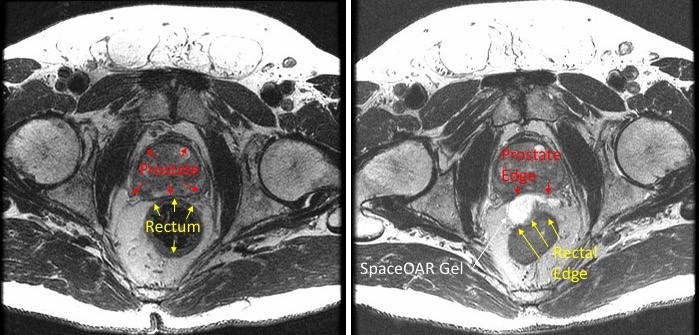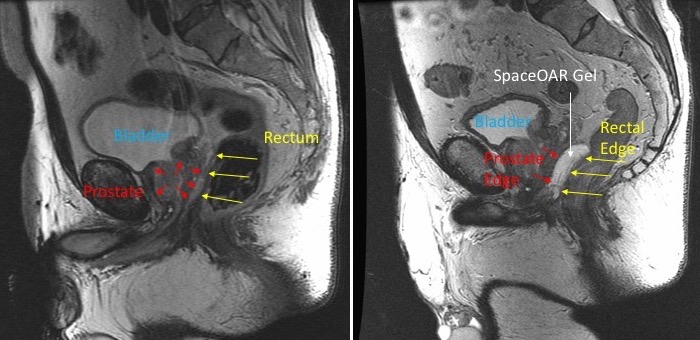Radiation is a very effective treatment for prostate cancer, but in a small percentage of patients it also can cause toxicities to nearby organs, particularly the rectum. Side effects are usually minor and can include hemorrhoidal type bleeding and rectal incontinence. But for a very small subset of patients, the side effects can be more serious.
Patients who take blood thinners or who have Crohn’s disease or ulcerative colitis, for example, are at greater risk for complications from radiation therapy for prostate cancer than are other patients. For these patients, sparing the rectum is a significant concern.


Serious complications are rare, but as Dr. Greg Cooley, Department of Human Oncology (DHO) clinical associate professor and radiation oncologist at UW Health East, says, “If they happen to one patient, that’s one too many.”
For patients who are susceptible to complications, Cooley uses a relatively new technique to move the rectum away from the treatment area to reduce the likelihood that the rectum will be exposed to radiation during treatment. He injects a substance called SpaceOAR into the space between the patient’s prostate and rectum, which pushes these two organs apart by about 1 cm and solidifies into a soft hydrogel that remains stable for three months.
The injection is a minor procedure that takes about five minutes and is usually done with the patient mildly sedated. Use of SpaceOAR poses virtually no risk to the patient and eventually passes from the body naturally.
Cooley uses this technique on patients most at risk of developing serious complications and particularly when treating with stereotactic body radiation therapy (SBRT) or brachytherapy—two therapies that deliver higher doses of radiation over a shorter period of time than conventional external beam radiation therapy.
Using this hydrogel spacer gives Cooley more confidence in treating patients at increased risk for rectal bleeding. Research shows that in addition to reducing side effects to the rectum, there may be some reduction in erectile and urinary side effects.
Cooley says that in some instances SpaceOAR makes possible the use higher doses of radiation. For example, Gary Ertel, a patient of Cooley’s who takes a high dose of Coumadin to prevent blood clots, was able to enroll in the high-dose arm of a clinical trial that is evaluating the effectiveness of higher SBRT doses.
“Without this gel, I would be very hesitant to use the higher dose on this patient,” Cooley says. “With it, we can almost eliminate or significantly reduce the possibility of rectal bleeding and the risk of serious complications that might result from it.”